This week we dive deep into the world of the shamisen as a physical instrument. Specifically, I want to tell you about the characteristics and secrets that make the oldest and most original shamisen unique. The Nagauta shamisen.
To do so, I will tell you about its parts, curiosities and sound. Will you join me?
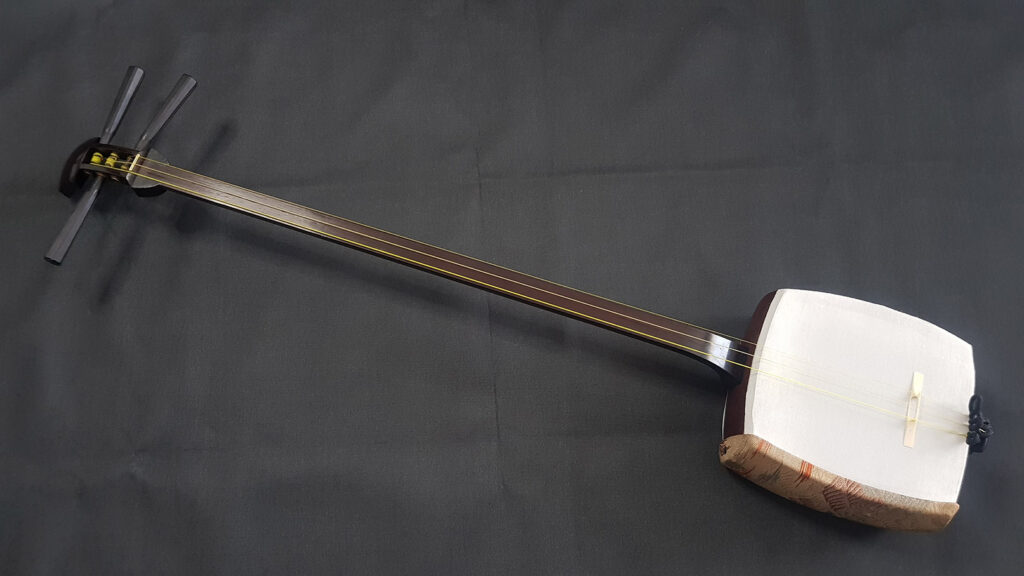
As you may have read in the history of the shamisen, there are several types of the instrument. Each with unique aspects and characteristics. That is why I would like to start with the oldest of them all.
First, you should know that a shamisen is made up of three distinct parts. The Tenjin, the Sao and the Dou. Taking advantage of the fact that this week I had the opportunity to restore a Nagauta drum, I will start explaining how it is made.
The Dou (drum)
The dou is made of four concave rectangular pieces glued together. These create an oval effect on the inside and outside. A nagauta shamisen is about ten percent smaller than a Tsugaru Shamisen. These measurements affect the thickness, height and width of its parts. Generally cedar or cherry wood is used. The one you see in the pictures is made of cherry.
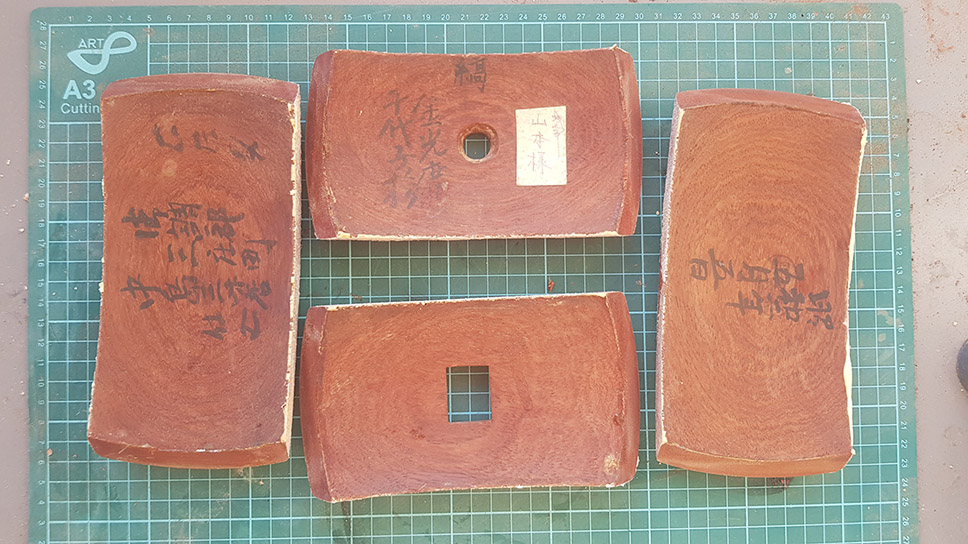

After gluing the pieces together, the only thing left to do is to put the skin on and tighten it. It is important to achieve an optimal and consistent tension, so it is important to be patient. This process usually takes 3 to 4 days.
Unlike Tsugaru, which uses dog skin, Nagauta shamisen uses cat skin, but don’t worry, in this case it’s synthetic 😉

When the Dou is complete, the Doukake (drum cover) is attached. It serves to protect it from rubbing against the arm and to give it personality. Unlike the Tsugaru, which is lacquered, the nagauta Doukake is usually made with silk embroidery. Here I show you a beautiful one with an image of a Japanese landscape with a Torii gate.
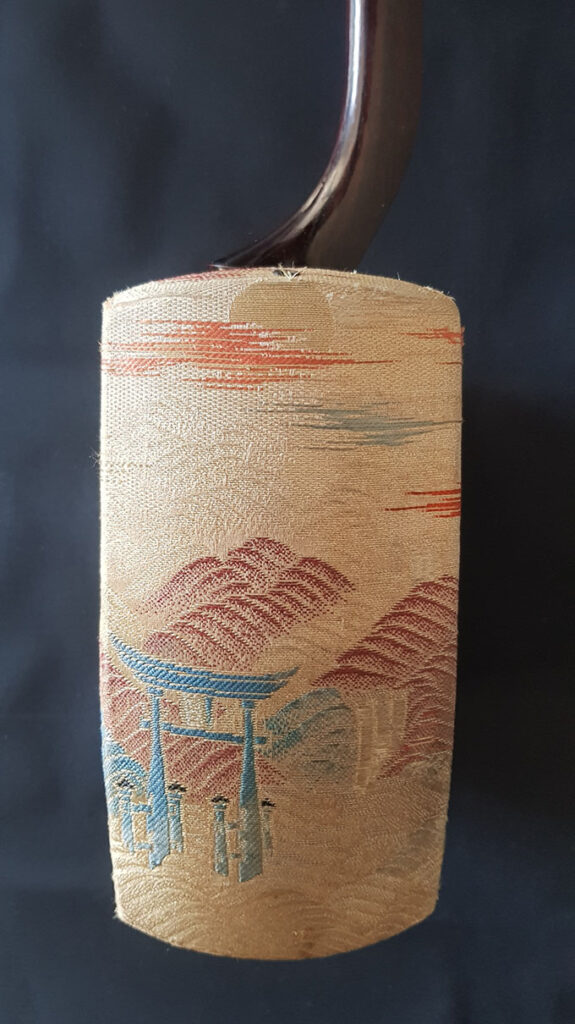
The Sao (Neck)
The sao connects to the dou at one end and to the Tenjin at the other. The thickness of a nagauta shamisen neck, with some exceptions, is usually 25mm. This thickness is called Hosozao (thin neck).
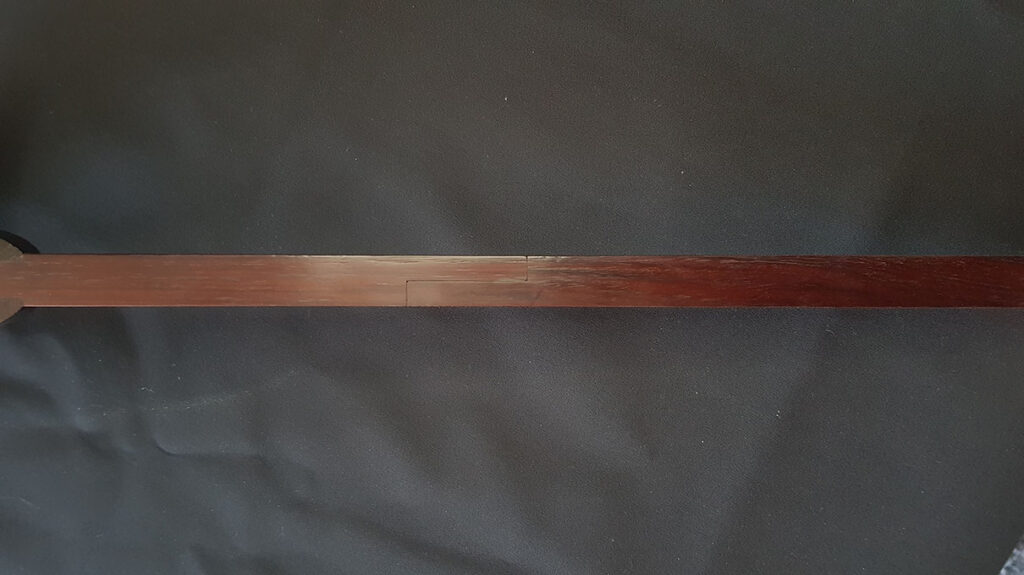
The neck of a shamisen can usually be made of one of three types of wood: red sandalwood, rosewood or cherry. The first one being the highest quality, the one you see in the pictures is made of rosewood.
As a curiosity, the Sao of a shamisen, with some exceptions, is divided into three parts. For this, the traditional Japanese joint system is used, mostly implemented in roofs and housing structures. This divisibility is called Mitsuori (divisible in three).
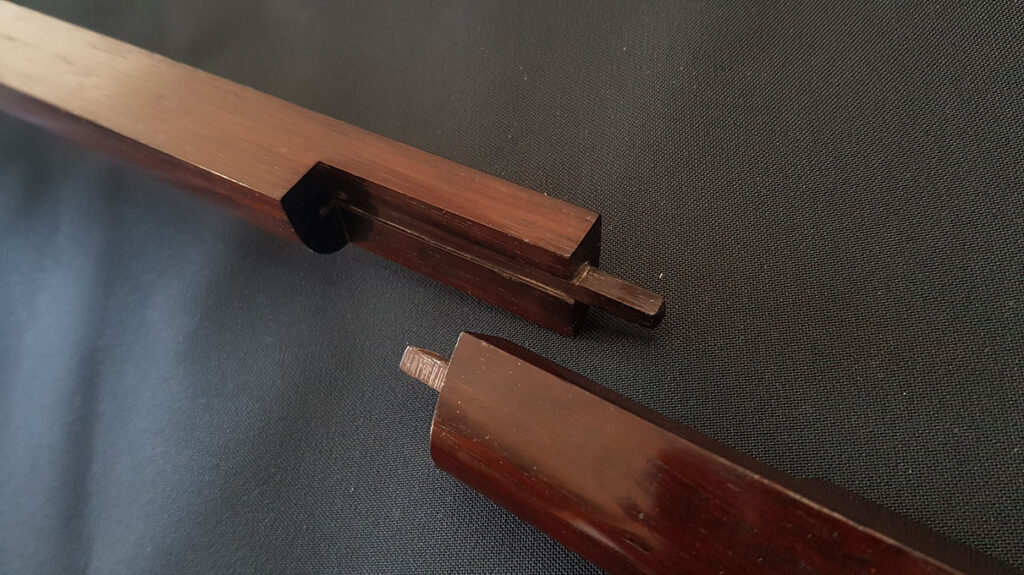
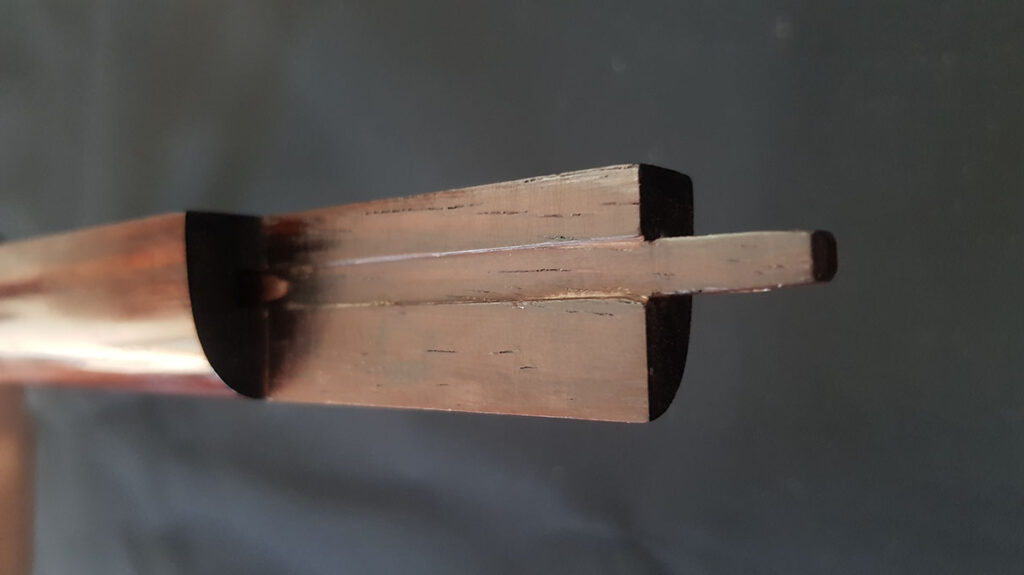
In the following video you can see how the parts are disassembled and joined together. At first sight and in spite of the passing of the years in the wood, the joint is hardly noticeable.
At its lower end it connects to the Dou. This area is key to differentiate a Nagauta from its brothers (Jiuta, Tsugaru). The Hatomune (Pigeon breast) of the nagauta shamisen is unique in its shape, with a very pronounced curve at the junction with the dou.
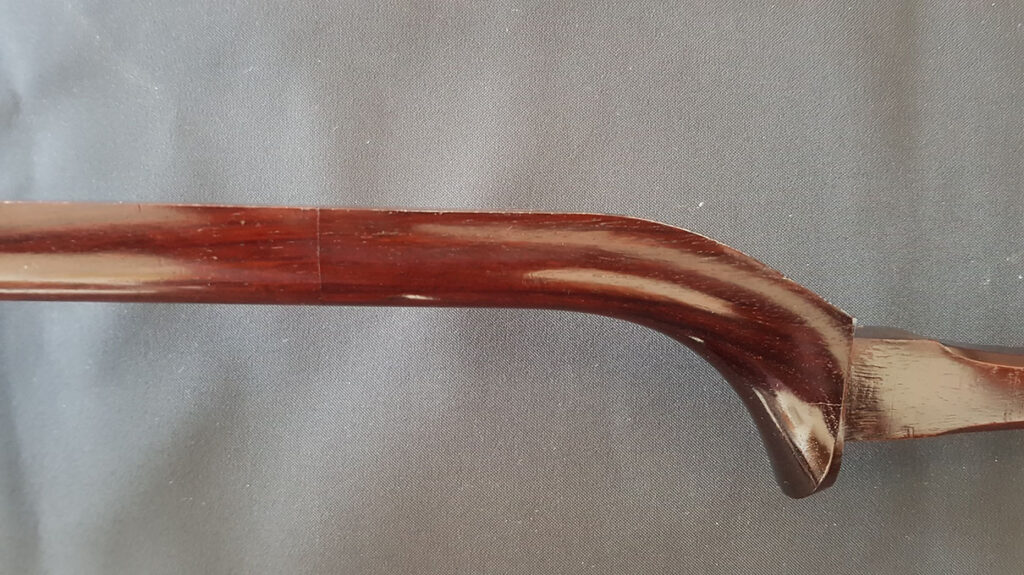
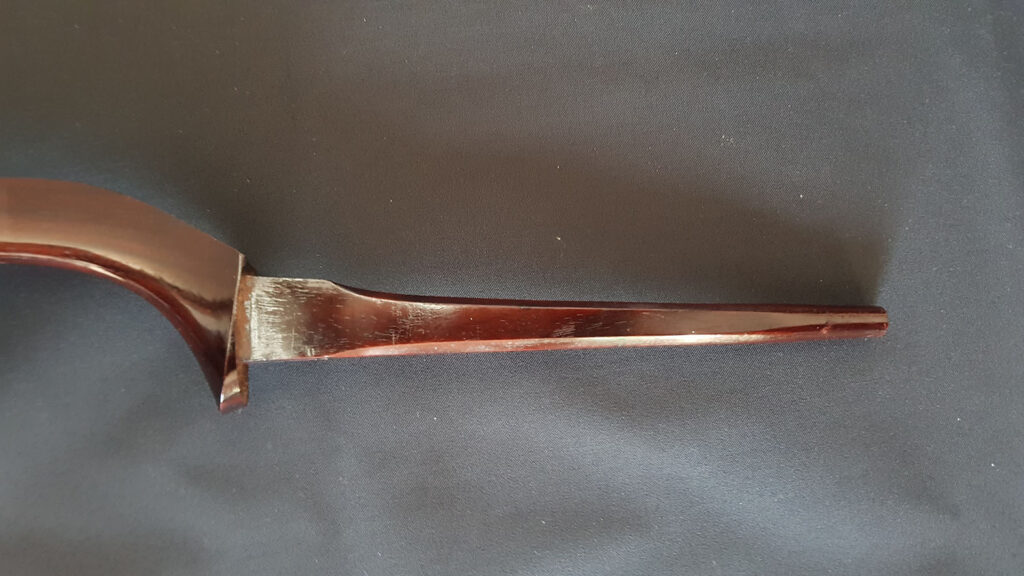
Next, a bit of ASMR connecting the Sao to the Dou. You can see how the joint fits perfectly.
The Tenjin (headstock)
The most characteristic and beautiful part of the shamisen is known as Tenjin. The three strings are wound on the Itomakis (tuning pegs), creating the characteristic look of the instrument.

The curvature of the tenjin on a nagauta shamisen is the same on Tsugaru. The difference is again its dimensions, around thirty percent smaller. The Itomakis are also reduced in size compared to the Tsugaru.
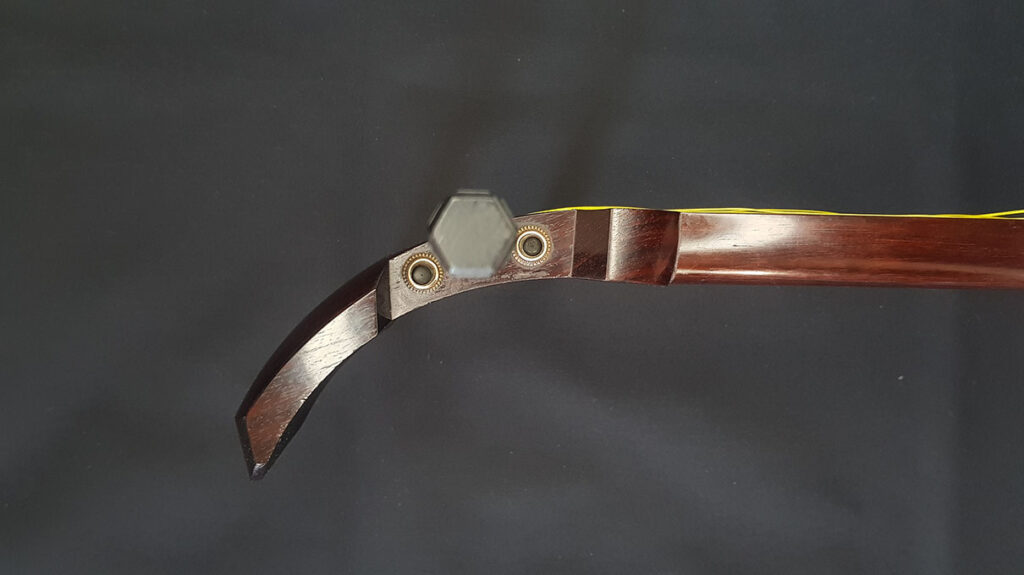
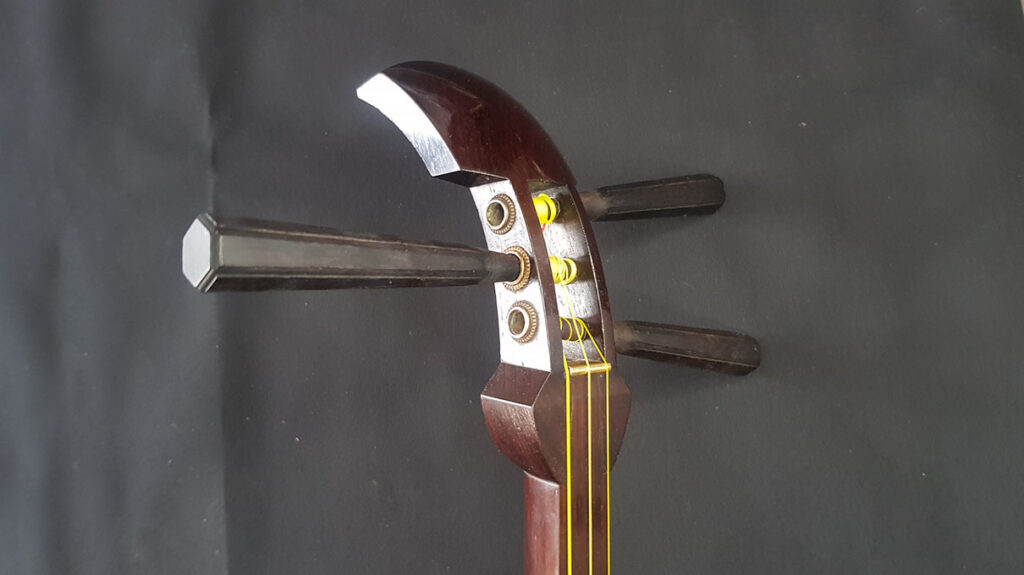
The other factor that differentiates a Tenjin from a nagauta shamisen is its traditional Sawari system. It rubs where the thickest string rests and creates the characteristic buzzing sound of the instrument. On the nagauta, the system is not adjustable and is embedded in the wood itself. Depending on the tuning used, the effect will be more or less pronounced.
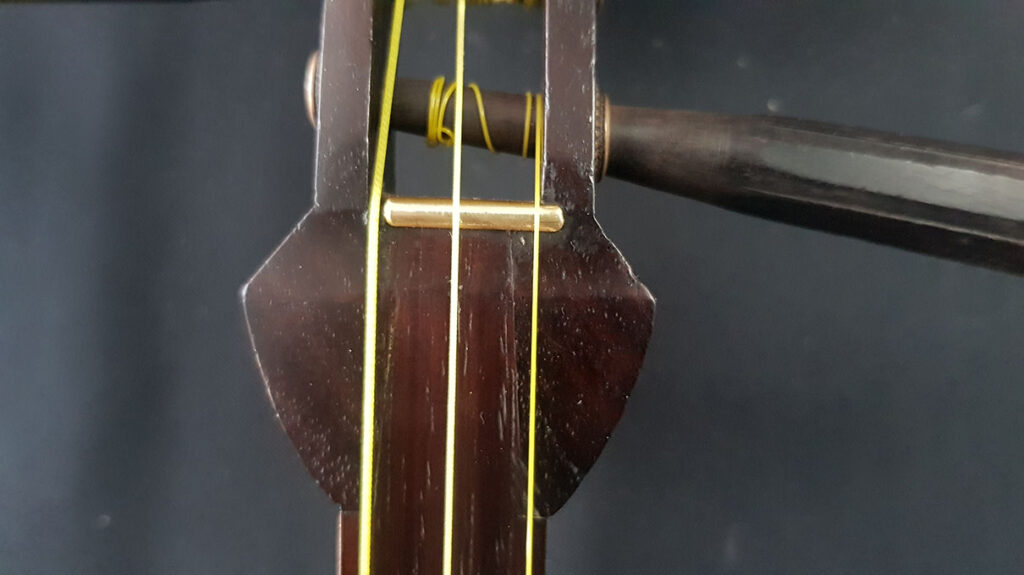
Finally, I would like to tell you about the Neo and the Koma.
The first one is a knot made of silk that is placed on the tip of the Sao. In the Neo are tied the ropes, also made of silk.
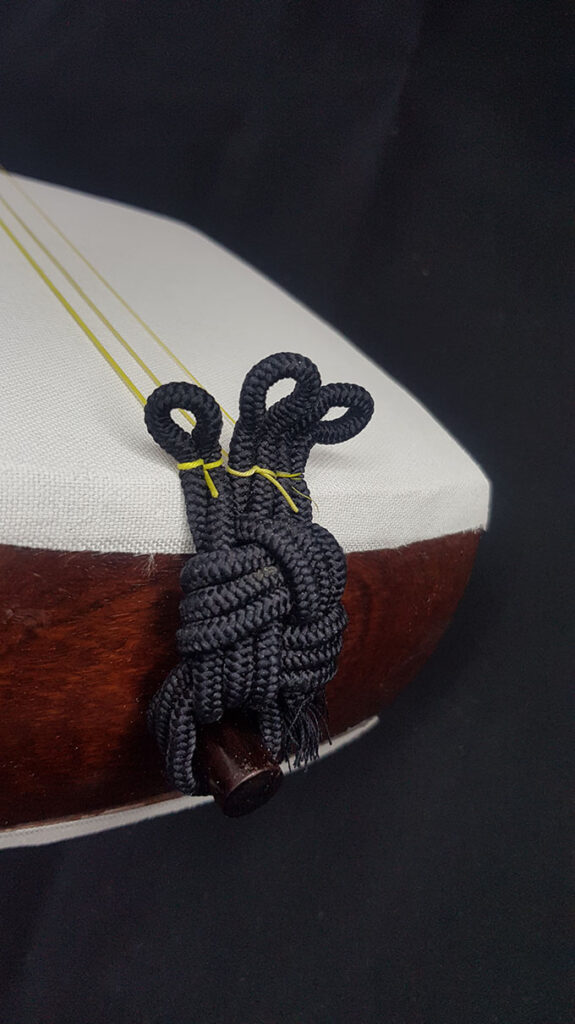
The Koma works like the bridge of any stringed instrument. The strings rest on it and are then tied to the Neo. It is usually made of ivory, bamboo or plastic.
The Koma has the ability to change the tone slightly, with the ivory one, for example, a more crystalline sound is achieved.
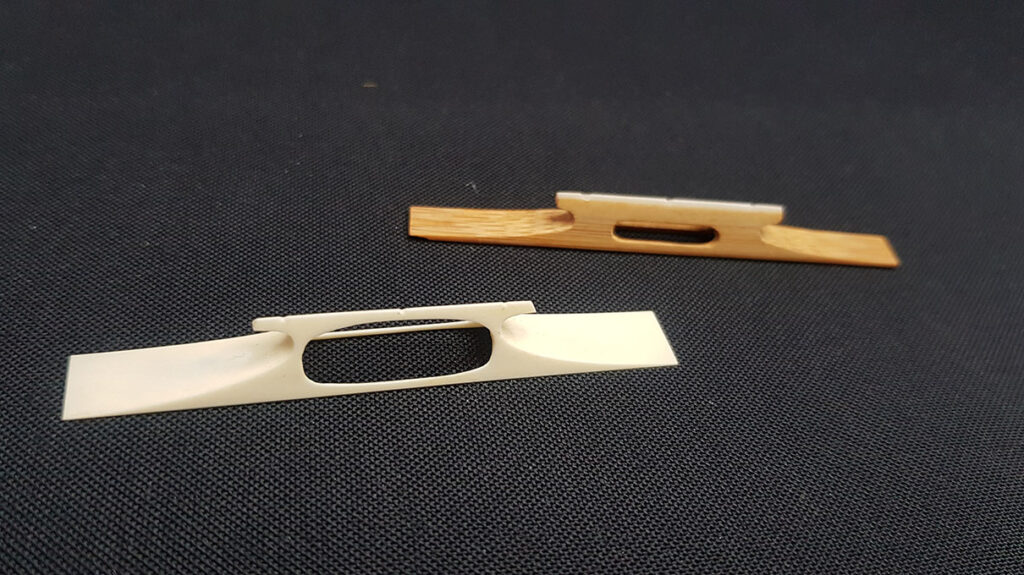
And to finish, what better than to leave you with a sample of their sound?
We still need to talk about Bachis (plectrums) and other accessories but that is a topic that requires a whole other post.
I hope you enjoyed this article and let me know what you thought of the Nagauta shamisen.
See you next week!
Jose